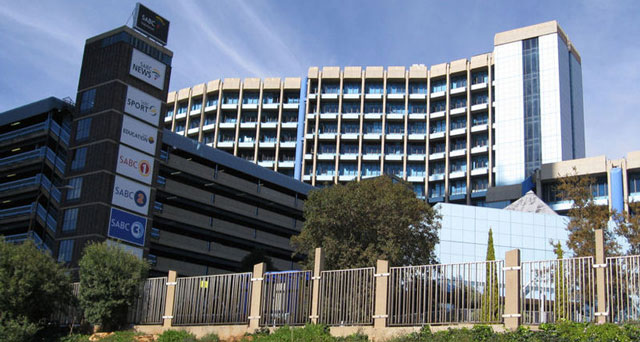
Six months after Lulama Mokhobo took over as the group CEO of the SABC there is little indication that the state broadcaster can turn around its moribund news offering while rival e.tv takes the gap to bag viewers.
Although the figures do fluctuate because of many variables, e.tv’s 7pm news programme gets between 2,5m and 3m viewers, according to Television Audience Measurement Survey figures from the SA Advertising Research Foundation, whereas the 7pm English news on SABC3 gets between 900 000 and about 1m viewers.
The 7.30pm news on SABC1, which alternates between isiZulu and isiXhosa, gets about 3,1m viewers and the 7pm Afrikaans news on SABC2 gets about 1,9m viewers.
In a television war that is galvanising DStv, through the entrance of pay-TV rival TopTV into the market, to grow its compact bouquet aggressively and steal eyeballs from the SABC, e.tv and DStv are the winners, whereas the SABC appears to be going nowhere slowly.
“Frankly, my view is that the only way I can see out of the SABC’s perpetual decline is to break it up,” said Anton Harber, the head of Wits University’s journalism school. “I’m a great believer in public broadcasting. I think it plays an important role, but I think the SABC is too big to work and is too much the centre of power struggles.”
E.tv vs SABC3
SABC spokesman Kaizer Kganyago did not respond to requests for comment and Jimi Matthews, the head of its television news, declined to be interviewed.
Nowhere is the gap between what the state broadcaster has to offer compared with private players more stark than at 7pm, when e.tv news goes up against SABC3 English news.
From a media-planning perspective, e.tv’s news offered higher audience ratings because it targeted a broader range of people, said Richard Lord, media director at the MediaShop. SABC3 news targeted the more monied living standards measurement group 8 to 10 (SABC1, for instance, typically targets LSM 4 to 6). But even e.tv’s LSM 8 to 10 numbers are bigger than those of SABC3 news.
“It’s clear that this is driven by content, and with news it is all about credibility,” said Harber. “My sense of the SABC recently is that it is not beholden to any particular faction. The main issue for me is that SABC news is so damn boring. There is an ethos of no risk. Good journalism is made by pushing boundaries and taking risks … I think the newsroom culture at the SABC is to not do anything provocative or stand-out.”
Alette Schoon, a television lecturer at Rhodes University’s journalism school, said e.tv seemed to invest in training its journalists in the classic technique of good TV journalism.
Producing good TV news
“American journalist Al Tompkins summarised the technique of producing good TV news in three phrases: shoot for the eye, write for the ear and aim for the heart,” said Schoon. “I often find that SABC journalists don’t bother to change Sapa [SA Press Association] wire copy much and the visuals are often just journalists listening to a ministerial press conference. Although there is an attempt to introduce ordinary people as characters, these don’t go far beyond a grateful beneficiary of some project or a short comment from a victim.”
Patrick Conroy, group head of eNews, said e.tv’s audience for the 7pm news had been climbing steadily since 2005. Prior to that it took a hit when SABC3 moved its flagship bulletin from 8pm to 7pm.
To fight the SABC3 time change, Conroy said, e.tv put a lot of effort into getting the news team to focus on the target market and understand the key issues affecting it. It has even created a fictional viewer called “Joe Modisane” and insists that every bulletin speaks to him directly.
“There was a lot of resistance to this approach in the news department,” Conroy said. “But within a few months we started to see the results and by mid-2005 the team had SABC3 in its sights. We followed up the Joe Modisane model with annual market research.
Trusted brand
“We are [now] in a good place as far as audience feedback is concerned. The bottom line is that we are a trusted brand. It has taken years of hard work to achieve this kind of response. It literally meant fussing over every bulletin for eight years … Interestingly, [the market research tells us that] we are often seen as a champion of the underdog, the poor, or those who have suffered an injustice.”
Schoon said, although e.tv did a good job in making stories personal, she believed that its focus on a middle-class target market sometimes meant it lacked broader context, for example, the realities of poverty.
“Although the SABC also does not give adequate voice to the poor and activists dealing with issues of poverty and often overemphasises the voices of officials and therefore the ruling party, I do think there is often more of a sense of our country as struggling with these difficulties and life beyond a middle-class bubble.”
Harber, meanwhile, believes that the dullness of SABC news has a negative effect on the state of journalism in the country. “The BBC sets a high bar for news coverage in the UK. If one was really concerned about improving the quality of journalism in this country, the best vehicle to set high news standards would be the national broadcaster.” — (c) 2012 Mail & Guardian
- Visit the Mail & Guardian Online, the smart news source




